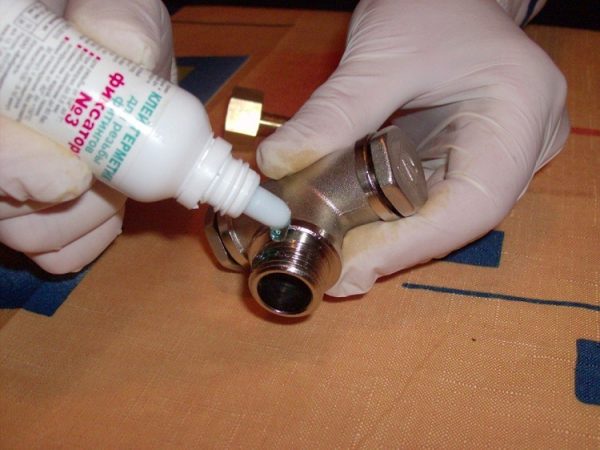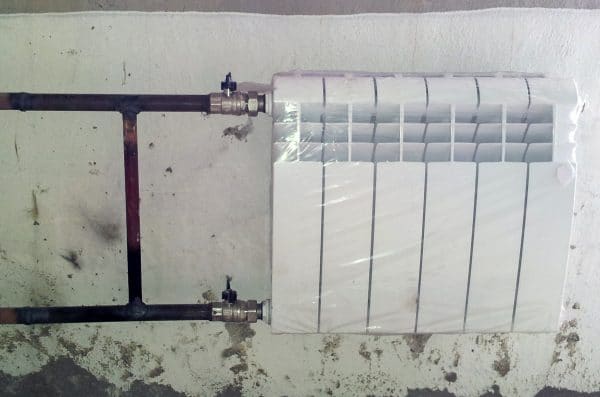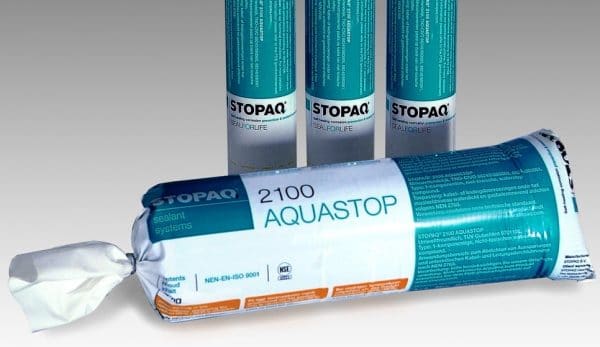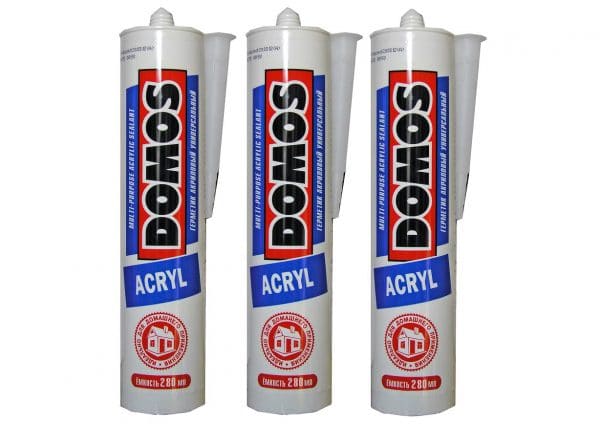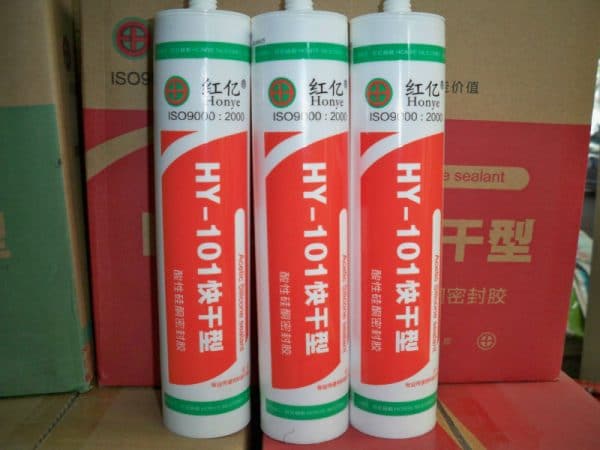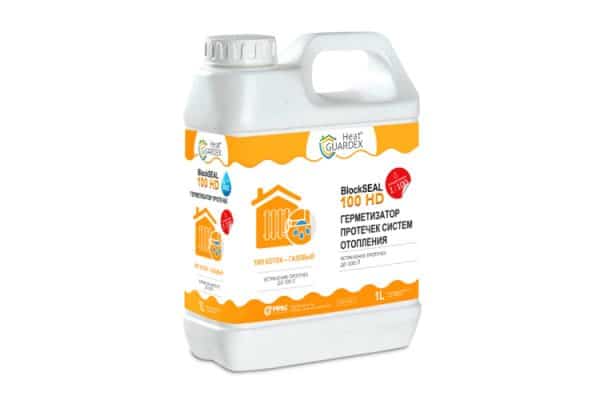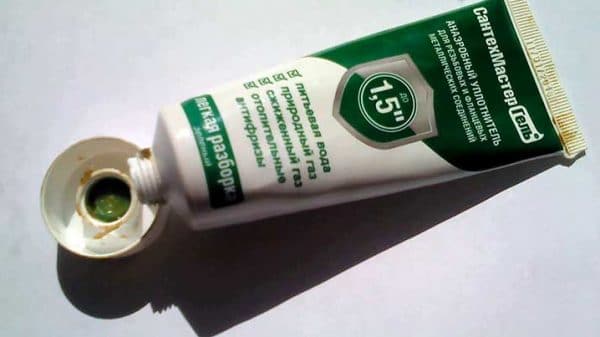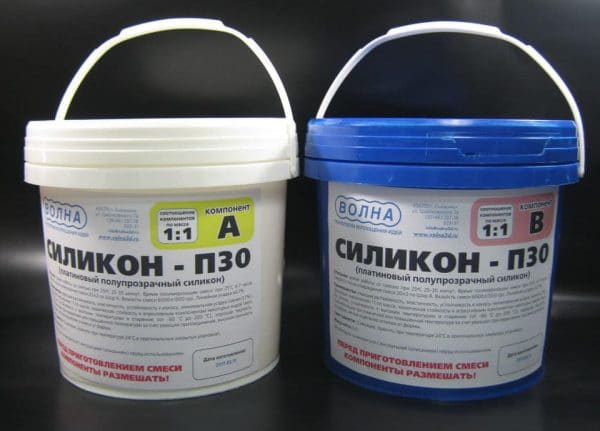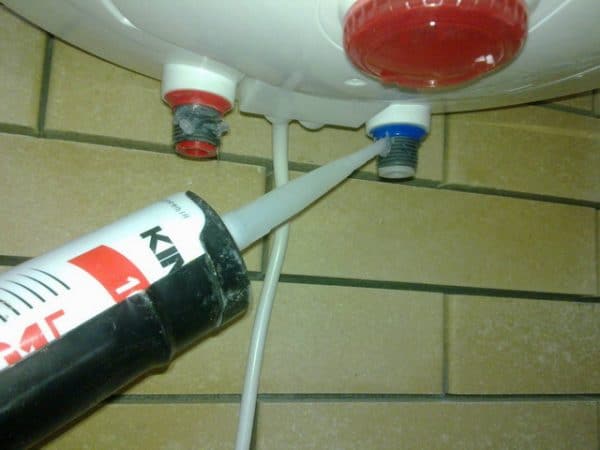Even the highest quality heating system needs protection from damage and over time begins to require repair. To eliminate the leakage of pipes and batteries, a sealant for heating can be used - a special repair tool that allows you to quickly and reliably restore the heating system (CO).
- What is sealing for?
- Basic composition requirements
- Types of sealants for heating systems
- Based on oligomers
- Acrylic
- Thiocolov
- Silicone
- Polyurethane
- Liquid sealant for heating system
- Technology and methods of using sealant for heating systems
- Outdoor processing
- Internal processing
- Preparatory work before using sealant
- Sealant preparation
- Setting the heating system for filling
- Sealant Fill
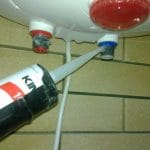
What is sealing for?
Sealing in a heating system is usually understood as the elimination of open and hidden leaks that occur in any area. In fact, this problem belongs to the category of emergency situations and requires urgent solutions, as well as strict adherence to technology during work. In addition to isolating the leakage of cold or hot water, sealing may be necessary in such cases:
- for laying water pipes;
- at installation of threaded connections;
- for sealing the cover of the heating boiler;
- for installing a warm floor;
- to strengthen the radiator joints after disassembling into sections.
CO sealant is a universal self-sealing solution that helps eliminate leaks in pipes and joints of parts. Most sealants are suitable for indoor and outdoor use, they can be poured into the expansion tank, other parts of the water system.
to contents ↑Using sealant allows you to quickly restore the functioning of CO, and without violating the integrity of the walls, floors. Sealants are especially often used when the pipes in the house are in a place inaccessible for open operations, and also when it is not possible to eliminate leakage by soldering, applying a clamp.
Basic composition requirements
Sealant can be used for polypropylene, bimetallic, and other pipes of the heating system. But before buying, it is important to clarify that its characteristics correspond to a particular pipe material, because the compositions for plastic are not suitable for metal networks. You can get acquainted with such information on the package, where accurate data on the composition and properties are always indicated.
In addition, the sealant must meet the following requirements:
- Resistance to adverse factors. The water in the pipes is under pressure, in addition, it is hot. Therefore, the product must necessarily be moisture resistant, not responsive to temperature extremes, the effects of an aggressive chemical environment. If the sealant is used in steam systems, it must be high temperature (heat resistant).
- Long service life. The operating time of the entire CO depends on this factor. If the sealant is reliable, the system will work for at least 5-10 years. The cost of such funds is usually quite high.
- Elasticity. Sealants from leaks after hardening should maintain plasticity.So they will easily, without destruction and detachment, endure the expansion and contraction of the base material, which inevitably occurs when temperature changes.
Types of sealants for heating systems
The choice of sealant is determined not only by the material of the pipes, but also by the type of heat carrier used and the presence of a heat exchanger. If you select the wrong product, pipe clogging may occur anywhere in the heating system. Different substances can be used as a heat carrier, and the sealant should not react or break down from contact with them. On this basis, funds are divided into those that can be contacted:
- with water (ordinary, softened with chelators or magnetized);
- with antifreeze;
- with oils;
- with gas or steam.
A separate line is a sealant for cold water pipes, which is also applied to the threads of taps, used to seal joints. The consistency of the sealants can be fluid and pasty. Still pipe sealant can be classified by physical properties:
- Drying compounds. As the polymerization becomes completely dry. If the application and drying technology has been disrupted, the products may shrink and crack quickly.
- Non-drying compounds. Ideal for removing small leaks, sealing threads, although they can be squeezed out at the joints under pressure.
to contents ↑Among the popular brands of sealants, it is worth mentioning Aquastop 2100, BCG, Block Seal 100. The composition of the product is divided into several groups, which are described below.
Based on oligomers
Depending on the functional group used in the production, such agents are divided into polysulfide and polysiloxane. Sealants made of polysulfide oligomers are often used more often to work with heating systems. They have a unique set of properties: oil resistance, gas resistance, gas impermeability, weather resistance, the ability to operate for a long time in different temperature ranges.
to contents ↑Acrylic
Most of the acrylic products are not suitable for the repair of carbon monoxide in a private house, apartment. Only some brands are able to withstand temperature extremes and can boast of heat resistance. For example, for sealing pipes, radiators, anaerobic sealants are suitable - a kind of acrylic compounds that, when released into an airless medium, fill the entire enclosed volume (crack, chip) and form a homogeneous polymer mass.
Such products can withstand high temperatures, they are very durable, flexible. Seams and joints can subsequently be cleaned with acidic and alkaline substances, since sealants are sufficiently resistant to chemicals. And yet they have one drawback: dismantling the structure will be very difficult, since it becomes monolithic.
to contents ↑Thiocolov
Such materials can be used at temperatures of -20 ... + 40 degrees, that is, they do not belong to the number of heat-resistant ones. Therefore, they are operated only in construction for sealing interpanel joints, double-glazed windows, plumbing equipment and for repair of CO are not used.
Silicone
Such funds are considered universal and most in demand. Most silicone sealants are high temperature, therefore suitable for work in CO. They can be liquid and pasty, with the latter having thixotropic properties (do not flow after application). Technical characteristics of silicone compounds are as follows:
- possibility of operation at -60 ... + 300 degrees;
- penetration even into the smallest cracks, hollows;
- adhesion to any surfaces;
- solidification at room temperature;
- resistance to moisture, aggressive chemicals;
- elasticity;
- environmental Safety;
- strength;
- durability.
to contents ↑When buying silicone sealant, you need to pay attention to its specific variety. Tools are neutral and acidic, and the latter can cause corrosion of metals, therefore, are not suitable for metal pipes.
Polyurethane
Polyurethane-based products are produced in one-, two-component. The first are inexpensive, but they dry an order of magnitude longer. After reacting with the hardener, the second ones quickly undergo polymerization, as a result of which a strong, elastic joint is created. Polyurethane compounds are suitable for all types of materials, including metals, they do not provoke corrosion, on the contrary, protect parts from damage. Sealants are durable, resistant to aggressive chemistry, mechanical stress, low consumption.
to contents ↑Liquid sealant for heating system
Liquid sealant has to be used where there are hidden leaks, there is no access to the place of occurrence of the defect. Material is poured into the damaged pipe along with the coolant. In the area of the crack, the sealant inevitably comes into contact with air and begins to polymerize, sticking to the defect. Among the liquid options, there are those that work in water, antifreeze, suitable for metal or plastic pipes.
to contents ↑Technology and methods of using sealant for heating systems
To begin with, it is important to choose a suitable composition and accurately calculate its amount, which directly depends on the volume of the coolant. Usually, 1 liter of sealant is taken for 60-80 liters of liquid.
Outdoor processing
External operations include work on sealing joints, threaded joints. They need to be performed in this order:
- drain the liquid with CO;
- find the damaged area;
- clean the area of the defect from dust, dirt, old sealant;
- to degrease;
- apply a new composition;
- wait to dry;
- pour coolant into the system.
Internal processing
If you want to fill the sealant inside the CO, you must purchase a liquid tool. Water from the heating system is poured into appropriate containers, the sealant is diluted with water. The Mayevsky crane is unscrewed from the radiator, a pump is connected to its place. The system is filled with liquid with sealant, the pressure is increased to 1.5 atmospheres. After 6-8 hours, the sealant completely hardens.
Then the coolant is again drained, a new one is introduced instead of it (without sealant). In this way, another 2-3 repetitions of operations are performed, which is required to remove residues of non-hardened sealant from the pipes. After 3 days, they check for defects and cracks. If necessary, the process is repeated again. If the water leak is more than 30 liters per day, sealing is pointless: only major repairs with the replacement of a piece of pipe will help.
to contents ↑Preparatory work before using sealant
As a preparation of the system, untwisting of all cranes and removal of filters is performed. This is necessary for the release of air and water (antifreeze). To find a leak, the pipes should not be wet: for this purpose, a pump is installed on the first radiator, which will remove the remaining air and heat the inner surface of the pipeline to + 50 ... + 60 degrees.
to contents ↑Sealant preparation
The rate of addition of the sealing compound may vary depending on its type and brand. The concentration of the product should be calculated as accurately as possible, otherwise the effectiveness will be low. For this purpose, you must carefully read the instructions and determine the volume of coolant. You can perform the calculation using the following methods:
- Direct measurement. Take containers of a known size, pour water from pipes into them, reveal the total volume of liquid.
- Indirect measurement. Calculate the total length of the pipes, multiply by the area of their cross-section, add the volume of the boiler and radiators to the indicator (you can see them in the product passports).
to contents ↑After that, it is necessary to determine the rate of sealant according to the instructions for the specific tool. Usually it does not exceed 1 liter per 80 liters of coolant.It is necessary to mix the two-component sealant immediately before use by combining the two substances according to the proportions indicated in the instructions.
Setting the heating system for filling
To prevent the sealant from freezing prematurely before reaching the leak, it is important to completely remove air from the CO. After removing the filters and unscrewing the taps, the automatic pump is turned on for 2 hours - this is enough to etch the remaining gas.
Sealant Fill
In a large container, a solution of water and sealant is prepared, mixes well. The liquid is introduced into the heating system with a pump without delay - a high speed of work will help reduce the risk of contact with air. After CO starts in normal mode with a water temperature of about +50 degrees.
Control measures are carried out after 3-5 days - they help to check whether the sealing was carried out qualitatively. It is also advisable to conduct a pressure test - the launch of CO under pressure, for which it is better to invite an experienced specialist.

